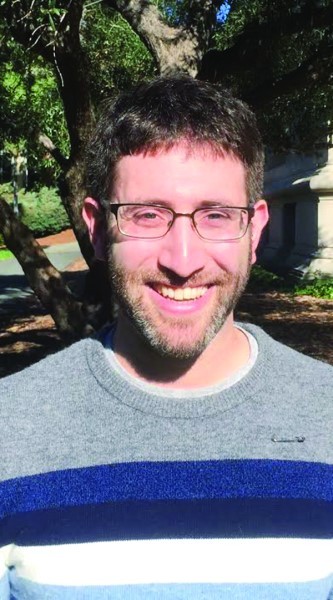Warwick native turning heads with sunflower study
Warwick native Benjamin Blackman has made quite a name for himself in the field of evolutionary science.
In August, Blackman’s article, “Follow the Sun,” was published in Science Magazine.
“Follow the Sun” is about solar tracking, the movement of flowers or the leaves of plants in response to the direction of the sun. Blackman’s study focused on this phenomenon as it relates to sunflowers, making several important discoveries.
“The plants begin at dawn with their stems facing east, where the sun is rising, growing and bending over the course of the day such that it tracks the position of the sun and the sky. The stems move to the west when the sun is setting and, at night, the plant again reorients itself to face east in anticipation of dawn,” he explains.
Blackman described driving by a big field of beautiful blooming sunflowers, observing how all of them were facing the same direction.
“That direction they are facing is toward east. What we were able to show in the paper was that they end up facing toward east because directional movement toward a light source is mainly coming from one direction. That ‘phototropic’ response is strongest in the morning and weaker at other times of day.”
Blackman says one of the most important findings of his study involved the flowers’ circadian clock.
“This internal rhythm that is generated in plants’ cells plays a key role in driving that nocturnal reorientation. Our study shows that this internal rhythm is what accelerates plant growth on the west side of the stem and represses it on the east side of the stem, such that you get that bending back toward east during the night,” he said.
“With this study, we were able to learn more about how plants function and interact with the environment successfully.”
Blackman, 37, said he was delighted to have his research published in Science Magazine.
“To have my work reach that really broad scientific audience is fantastic, and it is a validation that what we are doing is really interesting and that we are finding things that are advancing our knowledge of nature and how it operates,” he said.
Growing up in Warwick, Blackman was very involved in the Jewish community, belonging to Temple Sinai in Cranston during his junior high and high school years. There, he volunteered as a student teacher, served as a leader in the temple’s youth group, and actively participated in NFTY Northeast, an organization that brings together young Jews to learn and grow, both as Jews and as individuals.
“Those were all great experiences for me when I was growing up,” Blackman said.
His love of science began in a course at Winman Junior High School. He was so intrigued by the biology class that he decided to pursue a program in the study of genetics the following summer. “Going forward, I always had an eye toward biology,” he said.
He went on to attend Toll Gate High School (Class of ’97), where his love for science only grew stronger.
“At Toll Gate, I took multiple years of biology, chemistry, physics, and calculus, and I also participated in several competitive academic extracurricular activities. During this time, my excitement about science grew as I benefited from the dedication and encouragement of many teachers and coaches,” he said.
Following high school, Blackman headed west to Stanford University, where he earned an undergraduate degree in Biological Sciences (Class of ’01).
From 2001 to 2003, he was a technician in the lab of David Kingsley at Stanford. During this time he contributed to studies of the skeletal evolution of stickleback fish, a small, unique fish that evolves and mutates quickly when traveling between saltwater and freshwater. He then entered graduate school, earning his Ph.D. in Evolutionary Biology and Ecology from Indiana University, Bloomington, in 2009.
After graduating, Blackman was a post-doctoral scholar at Duke University, where he studied how populations of the common monkey flower adapt to local habitats.
Blackman accepted a teaching position at UVA in August of 2012. He taught Ecology of Evolution and Development and a graduate seminar titled “Speciation” at the university until December of 2015.
From UVA, Blackman moved back west, to the San Francisco area, to start a new position, which he currently holds, as an associate professor of the Evolutionary Process at the University of California, Berkeley.
Blackman attributes much of his success to his mentors along his scientific journey, from the junior high school teacher who sparked his interest in biology to those he met during his college and graduate school years.
Blackman says being Jewish also played a role in his success. “One of the major lessons that I took away from my Jewish education in Rhode Island was that part of being Jewish is studying, questioning and explaining, and I think, in part, this influenced me and how I went into science. That is what I do every day. I always want to learn more and am constantly asking questions.”
SAM SERBY, of East Greenwich, attended Temple Sinai, in Cranston. He is a recent graduate of Johnson & Wales University.








